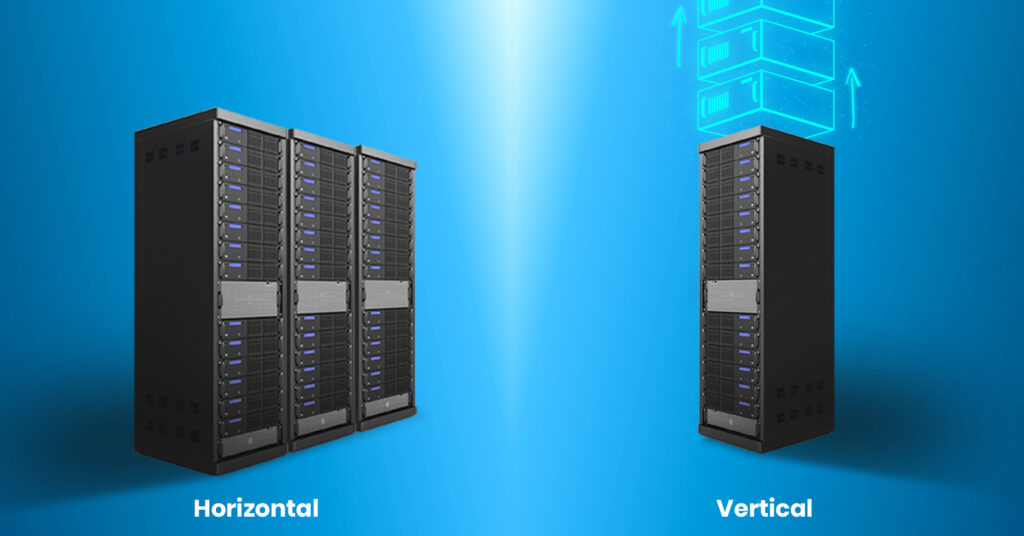Preparing for IT Infrastructure Scaling: What to Know
Today, businesses face the constant challenge of adapting to changing technological demands. As organisations grow, their IT infrastructure also needs to grow. Companies must prepare for IT infrastructure scaling to meet current and future demands efficiently and effectively. In this post, Nurture IT will explore what IT infrastructure scaling means, why it is important, and the major factors and best practices for successful scaling.

Nurture IT: If you’re ready to streamline your business’s IT infrastructure management for optimal efficiency and growth, contact us today!
Understanding IT Infrastructure Scaling
IT infrastructure scaling refers to the process of expanding and adapting an organisation’s technology resources to accommodate increased workloads, users, or data volumes. Scaling can occur in various dimensions, such as:
Vertical Scaling: This involves upgrading existing hardware resources like increasing CPU, RAM, or storage capacity on a single server or device. Vertical scaling, also known as “scaling up,” can be an efficient way to handle increased loads if the existing hardware allows for it.

Horizontal Scaling: Horizontal scaling, or “scaling out,” involves adding more identical servers or nodes to a system. This approach distributes the workload across multiple machines, improving redundancy, fault tolerance, and overall performance.
Application Scaling: Scaling can also be at the application level, where you optimise software to handle increased usage efficiently. This can involve redesigning software architecture, utilising microservices, or deploying containers and orchestration tools like Docker and Kubernetes.
Network Scaling: As traffic and data volumes increase, network infrastructure may need to scale for reliable and fast connectivity. This includes adding more bandwidth, load balancing, and optimising routing.
Nurture IT: If you’re ready to streamline your business’s IT infrastructure management for optimal efficiency and growth, contact us today!
Why IT Infrastructure Scaling Is Important
Effective IT infrastructure scaling is important because of:
Business Growth: As a business expands, its IT requirements grow in tandem. Without proper scaling, performance bottlenecks, downtime, and service disruptions can occur, hindering growth and customer satisfaction.
Performance Optimisation: Scaling results in efficient use of IT resources. It helps maintain acceptable response times, even during periods of high demand, and prevents system slowdowns or crashes.

Cost Efficiency: By scaling resources appropriately, organisations can avoid overprovisioning (which leads to wasted resources) or underprovisioning (resulting in performance issues). Proper scaling optimises IT spending.
Competitive Advantage: Scalable infrastructure enables businesses to stay agile and responsive to market changes. This adaptability is a competitive advantage in today’s fast-paced business environment.
Nurture IT: If you’re ready to streamline your business’s IT infrastructure management for optimal efficiency and growth, contact us today!
Key Considerations for IT Infrastructure Scaling
Preparing for IT infrastructure scaling involves careful planning and consideration of several key factors:
1. Current Workloads and Future Projections
Before implementing any scaling strategy, it’s important to assess your current workload and anticipate future demands. Analyse your data, traffic patterns, and resource utilisation to identify trends and potential bottlenecks. This data-driven approach will help you decide where and how to scale.

2. Scalability of Existing Infrastructure
Evaluate your current hardware, software, and network infrastructure to determine if it can support scaling efforts. Some systems may be inherently limited in their scalability, requiring upgrades or replacements. Consider both short-term and long-term scalability when making these assessments.
3. Cloud vs. On-Premises
Decide whether to scale your IT infrastructure using cloud-based services, on-premises solutions, or a hybrid approach. Evaluate which option aligns best with your organisation’s goals and constraints.
Nurture IT: If you’re ready to streamline your business’s IT infrastructure management for optimal efficiency and growth, contact us today!
4. Scalability Testing
Before scaling in a production environment, conduct thorough scalability testing in a controlled environment. This helps identify potential issues and allows you to fine-tune your scaling strategy. Load testing, stress testing, and performance monitoring are critical elements of this process.
5. Automation and Orchestration
Implement automation and orchestration tools to simplify the scaling process. These tools can automatically provision, configure, and manage resources as needed, reducing the burden on IT teams and minimising the risk of human error.
6. Redundancy and High Availability
To minimise downtime and improve fault tolerance, make sure your infrastructure is redundant and highly available. Redundancy can be achieved through load balancers, failover mechanisms, and distributed architectures.
Nurture IT: If you’re ready to streamline your business’s IT infrastructure management for optimal efficiency and growth, contact us today!
7. Security
Security is crucial at every step of the scaling process. As you expand your infrastructure, you may be exposed to new security risks. Implement robust security measures to protect your data and systems, including firewalls, intrusion detection systems, and encryption.

8. Compliance and Regulations
Be mindful of regulatory and compliance requirements that may apply to your industry.
9. Monitoring and Analytics
Implement comprehensive monitoring and analytics tools to continuously assess the performance and health of your infrastructure. Real-time data and insights enable proactive responses to issues and help with capacity planning.
Nurture IT: If you’re ready to streamline your business’s IT infrastructure management for optimal efficiency and growth, contact us today!
10. Scalable Software Architecture
If your scaling strategy includes application scaling, consider transitioning to a scalable software architecture like microservices or containerisation. These approaches enable you to add or remove components as needed to meet changing demands.
Best Practices for Successful IT Infrastructure Scaling
To ensure a smooth and successful IT infrastructure scaling process, follow these best practices:
1. Start Early
Begin planning for scaling well before you anticipate reaching capacity limits. Proactive planning allows for a more controlled and measured approach to scaling, reducing the risk of unexpected issues.
2. Set Clear Objectives
Define clear objectives for your scaling efforts. Understand what you aim to achieve, whether it’s improved performance, cost savings, or enhanced redundancy. Having clear goals helps guide your decisions and investments.
Nurture IT: If you’re ready to streamline your business’s IT infrastructure management for optimal efficiency and growth, contact us today!
3. Monitor and Optimise
Continuously monitor your infrastructure’s performance and make ongoing optimisations. Scaling is not a one-time task but an iterative process that requires constant attention and adjustment.
4. Document Everything
Maintain detailed documentation of your infrastructure, configurations, and scaling processes. This documentation is invaluable for troubleshooting, knowledge transfer, and ensuring consistency.
5. Collaborate Across Teams
Effective scaling often requires collaboration between IT, development, and operations teams. Encourage open communication and collaboration to make sure that everyone is aligned with the scaling strategy.
Nurture IT: If you’re ready to streamline your business’s IT infrastructure management for optimal efficiency and growth, contact us today!

6. Consider Disaster Recovery
Include disaster recovery planning in your scaling strategy. Establish backup and recovery procedures to mitigate the risk of data loss and prolonged downtime.
7. Regularly Review and Update
Regularly review your scaling strategy to make sure it remains aligned with your organisation’s changing needs and goals. Update your strategy as necessary to accommodate evolving requirements.
Final Words
Preparing for IT infrastructure scaling is a critical aspect of modern business operations. By understanding the different dimensions of scaling, recognising its importance, and following key considerations and best practices, organisations can ensure that their IT infrastructure remains adaptable, efficient, and capable of supporting growth and innovation. A well-executed scaling strategy not only improves performance and cost-efficiency but also provides a competitive edge in a rapidly evolving digital landscape.
Nurture IT: If you’re ready to streamline your business’s IT infrastructure management for optimal efficiency and growth, contact us today!
About Nurture IT
Nurture IT, one of the leading IT service providers in Bangalore, offers customised scalable technology solutions specifically designed for our client’s unique needs. Our solutions accelerate growth, reduce costs and enable collaboration. As a preferred partner to technology leaders like Microsoft and Cisco, we deploy the most advanced business technology solutions to ensure optimal reliability, productivity and value.







